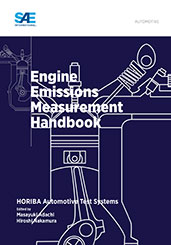2017-12-06
Impact of Non-Thermal Plasma on Particulate Emissions in Application in a Diesel Engine Exhaust Duct 2017-01-5100
Particulates and nitrogen oxides comprise the main emission components of the Diesel combustion and therefore are subject to exhaust emission legislation in respective applications. Yet, with ever more stringent emission standards and test-procedures, such as in passenger vehicle applications, resulting exhaust gas after-treatment systems are quite complex and costly. Hence, new technologies for emission control have to be explored. The application of non-thermal plasma (NTP) as a means to perform exhaust gas after-treatment is one such promising technology. In several publications dealing with NTP exhaust gas after-treatment the plasma state was generated via dielectric barrier discharges. Another way to generate a NTP is by a corona high-frequency discharge. Hence, in contrast to earlier publications, the experiments in this publication were conducted on an operated series-production Diesel engine with an industrial pilottype corona ignition system. Originally developed as an alternative for a spark-plug system in SI engines its attributed properties, such as large penetrated volume and high radical concentration, may also be utilized in the exhaust gas stream. To investigate the effects of a corona discharge on Diesel engine emissions, four igniters were integrated in the exhaust duct of a common-rail direct-injection 2.0 liter diesel engine equipped with a diesel particulate filter (DPF). The impact on particulate number, size distribution as well as on nitrogen oxides has been studied for various operational parameters of the corona system. The particulate number was measured downstream of the DPF to observe the level of improvement for remaining unfiltered nanoparticulates. In this first series of tests, a reduction in particulate number of up to 10 % was achieved depending on engine load. Particulate size distribution was then measured upstream of the DPF. In this case, the highest reduction of 10 % was observed in the midrange particulate size of about 60 nm. No increase in other particulate size ranges has been observed.
SAE MOBILUS
Subscribers can view annotate, and download all of SAE's content. Learn More »

BOOK
Engine Emissions Measurement Handbook
TECHNICAL PAPER
Cooled EGR Rate Measurement with a Thermal Anemometer for EPA02 Heavy Duty Diesel Engine Emission Control
2003-01-0263
TECHNICAL PAPER
Application of Non-Thermal Plasma Assisted Catalyst Technology for Diesel Engine Emission Reduction
2000-01-3088
